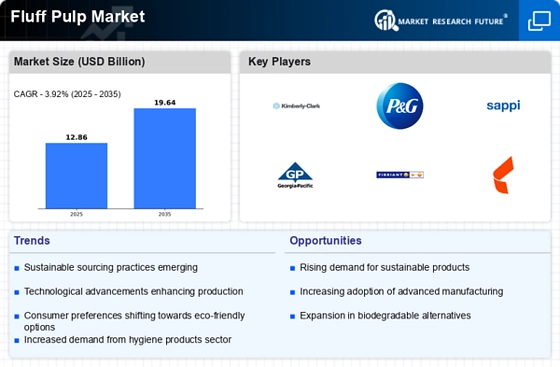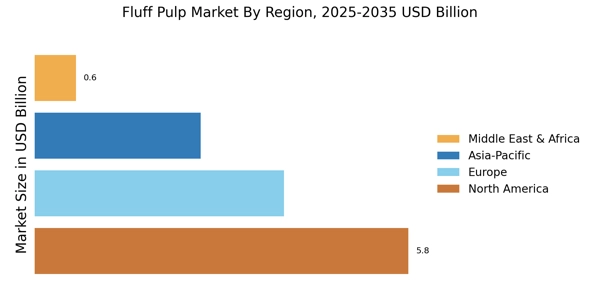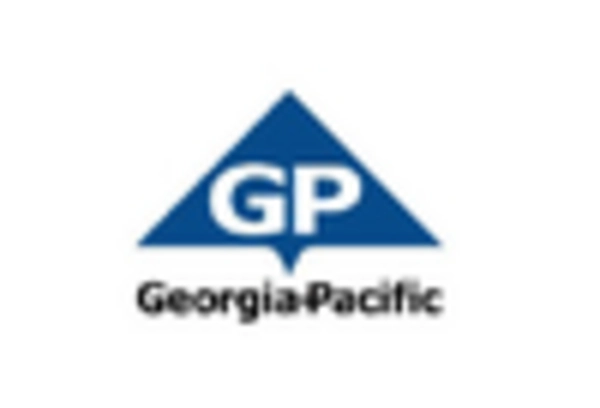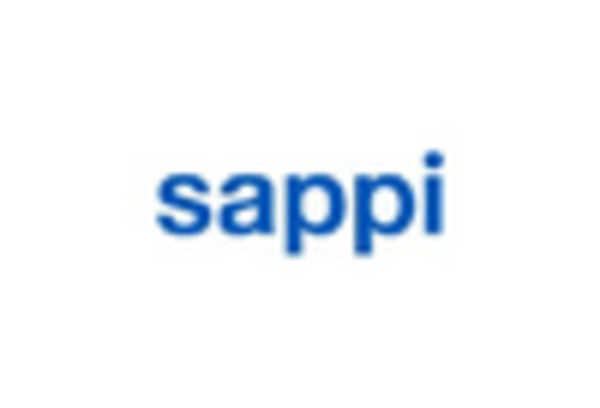Sustainability Initiatives
Sustainability initiatives play a crucial role in shaping the Fluff Pulp Market. As environmental concerns gain prominence, manufacturers are increasingly focusing on sustainable sourcing and production methods. The demand for biodegradable and eco-friendly products is on the rise, with consumers favoring brands that prioritize sustainability. This shift is reflected in the growing market for sustainable absorbent products, which is expected to expand significantly in the coming years. Companies that invest in sustainable practices may not only enhance their brand image but also capture a larger share of the market. The Fluff Pulp Market is likely to witness a transformation as sustainability becomes a core component of product development.
Rising Demand for Absorbent Products
The Fluff Pulp Market experiences a notable increase in demand for absorbent products, particularly in the hygiene sector. This demand is primarily driven by the growing population and the rising awareness of personal hygiene. As consumers become more health-conscious, the need for products such as diapers, feminine hygiene products, and adult incontinence products continues to rise. In 2025, the market for absorbent hygiene products is projected to reach approximately USD 80 billion, indicating a robust growth trajectory. This trend suggests that manufacturers in the Fluff Pulp Market must adapt to meet the evolving needs of consumers, potentially leading to innovations in product design and functionality.
Technological Innovations in Production
Technological innovations are reshaping the Fluff Pulp Market, enhancing production efficiency and product quality. Advances in manufacturing processes, such as improved fiber processing techniques and automation, are enabling producers to create fluff pulp with superior absorbency and softness. These innovations not only reduce production costs but also allow for the development of new product lines that cater to diverse consumer preferences. The integration of technology in the Fluff Pulp Market is expected to drive growth, as companies that adopt these advancements can respond more effectively to market demands and maintain a competitive edge.
Regulatory Compliance and Safety Standards
Regulatory compliance and safety standards are critical factors influencing the Fluff Pulp Market. As governments and regulatory bodies implement stricter guidelines regarding product safety and environmental impact, manufacturers must ensure that their products meet these requirements. Compliance with safety standards not only protects consumers but also enhances brand reputation. The Fluff Pulp Market is likely to see increased investment in quality control and testing processes to adhere to these regulations. Companies that prioritize compliance may gain a competitive advantage, as consumers increasingly prefer products that are certified safe and environmentally friendly.
Increasing Urbanization and Lifestyle Changes
The Fluff Pulp Market is significantly influenced by increasing urbanization and changing lifestyles. As urban populations grow, there is a corresponding rise in the demand for convenience products, including those made from fluff pulp. Urban consumers often seek products that offer ease of use and comfort, such as disposable diapers and feminine hygiene products. This trend is expected to continue, with urbanization projected to increase by 1.5 billion people by 2030. Consequently, the Fluff Pulp Market must adapt to these demographic shifts, ensuring that product offerings align with the preferences of urban consumers.


















Leave a Comment